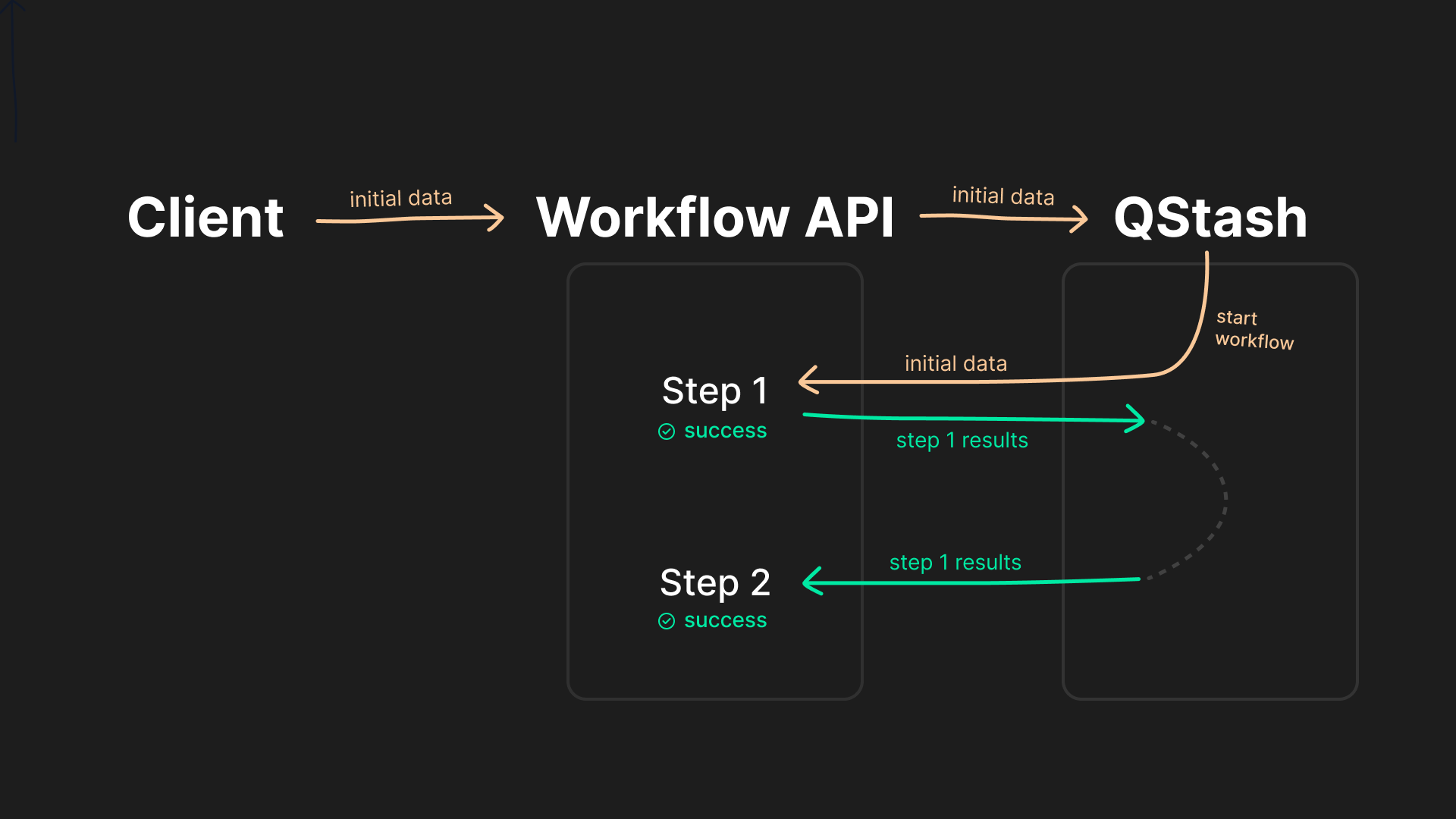Getting Started
Overview
Upstash Workflow lets you write durable, reliable and performant serverless functions. Get delivery guarantees, automatic retries on failure, scheduling and more without managing any infrastructure.
- No more function timeouts on serverless platforms
- Automatic error recovery, continue a workflow run from any step
- Integrates perfectly with your existing infrastructure; all code runs on your servers
- Delivery guarantees, batching, schedules and more
Quickstarts
Workflow supports Next.js, Cloudflare Workers and many more frameworks.
Next.js
Build a Next.js application with QStash Workflow
Cloudflare Workers
Use and deploy Upstash Workflow on Cloudflare Workers
How it works
Upstash Workflow builds on the principle of steps. Instead of defining a single, complex piece of business logic, workflows contain multiple individual steps.
In case of an error, a failed step is retried individually without needing to re-run any previous steps. Instead of the entire business logic, each step can take up your serverless function execution duration, and many more benefits.

Example workflow use-cases and their steps:
-
Image processing:
- Download an image
- Process the image
- Upload the processed image
-
SaaS Customer Onboarding
- Create user account
- Provision resources (e.g., storage, compute)
- Send welcome email
- Wait three days
- Send follow-up email
-
E-commerce order fulfillment:
- Validate order details
- Check inventory
- Process payment
- Generate shipping label
- Update inventory
- Send confirmation email
Next.js code example
Let’s see a practical implementation of Upstash Workflow using Next.js and customer onboarding as an example. See our Next.js Quickstart for a complete guide.
import { serve } from "@upstash/qstash/nextjs";
import { sendEmail } from "./emailUtils";
// Type-safety for starting our workflow
interface InitialData {
userId: string
email: string
name: string
}
export const POST = serve<InitialData>(async (context) => {
const { userId, email, name } = context.requestPayload;
// Step 1: Send welcome email
await context.run("send-welcome-email", async () => {
await sendEmail(email, "Welcome to our service!");
});
// Step 2: Wait for 3 days (in seconds)
await context.sleep("sleep-until-follow-up", 60 * 60 * 24 * 3);
// Step 3: AI-generate personalized follow-up message
const aiResponse = await context.call(
"generate-personalized-message",
"https://api.openai.com/v1/chat/completions",
"POST",
{
model: "gpt-3.5-turbo",
messages: [
{ role: "system", content: "You are an assistant creating personalized follow-up messages." },
{ role: "user", content: `Create a short, friendly follow-up message for ${name} who joined our service 3 days ago.` }
]
},
{ headers: { ... } }
);
const personalizedMessage = aiResponse.choices[0].message.content;
// Step 4: Send personalized follow-up email
await context.run("send-follow-up-email", async () => {
await sendEmail(email, personalizedMessage);
});
});
Any HTTP request using context.call, like the AI-generation above, does not
count towards your function’s execution time and does not increase your
serverless bill. It can also run for up to 2 hours, completely bypassing any
platform-specific function timeouts.
The above example should give you a rough idea of how a workflow looks in code. For step-by-step instructions on setting up your first workflow with images along the way, see our Next.js Quickstart.
Here are more details about what the context object does:
See caveats for more complex API usage and best-practices when using Upstash Workflow.
Guides on common workflow topics:
- Cancel a running workflow
- Handle failed workflow runs
- Monitor active workflows in real-time
- Schedule repeated workflow runs
- Secure a workflow endpoint
- Handle workflow route code changes
- Develop your workflows locally
- Pricing
If you’re curious about the behind-the-scenes about how we ensure separate step execution or prevent serverless timeouts, we wrote about it here! :)
Here is our Upstash Workflow roadmap to see what we planned for the future.
Was this page helpful?

